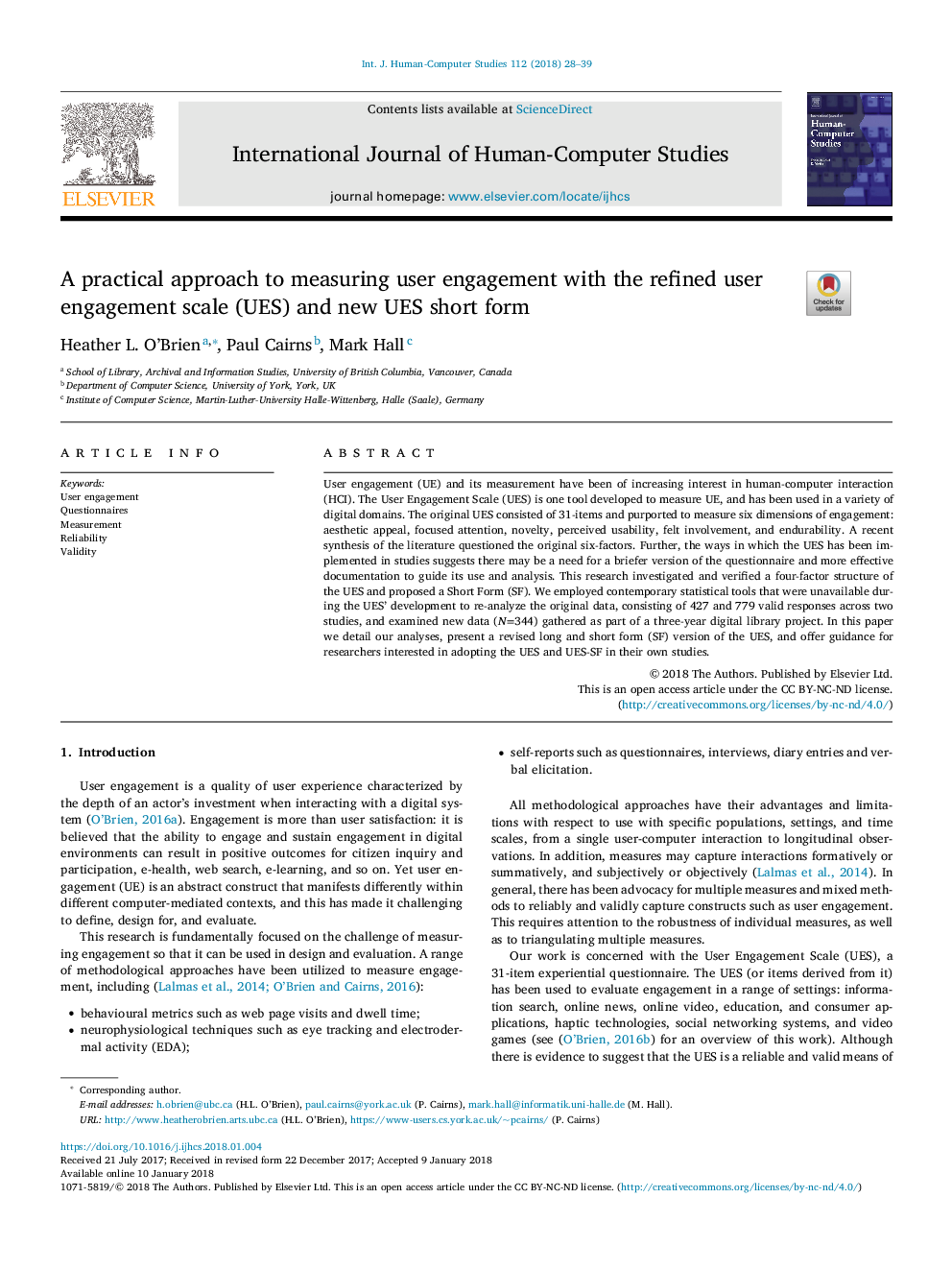| کد مقاله | کد نشریه | سال انتشار | مقاله انگلیسی | نسخه تمام متن |
|---|---|---|---|---|
| 6860983 | 1438942 | 2018 | 12 صفحه PDF | دانلود رایگان |
عنوان انگلیسی مقاله ISI
A practical approach to measuring user engagement with the refined user engagement scale (UES) and new UES short form
دانلود مقاله + سفارش ترجمه
دانلود مقاله ISI انگلیسی
رایگان برای ایرانیان
کلمات کلیدی
موضوعات مرتبط
مهندسی و علوم پایه
مهندسی کامپیوتر
هوش مصنوعی
پیش نمایش صفحه اول مقاله

چکیده انگلیسی
User engagement (UE) and its measurement have been of increasing interest in human-computer interaction (HCI). The User Engagement Scale (UES) is one tool developed to measure UE, and has been used in a variety of digital domains. The original UES consisted of 31-items and purported to measure six dimensions of engagement: aesthetic appeal, focused attention, novelty, perceived usability, felt involvement, and endurability. A recent synthesis of the literature questioned the original six-factors. Further, the ways in which the UES has been implemented in studies suggests there may be a need for a briefer version of the questionnaire and more effective documentation to guide its use and analysis. This research investigated and verified a four-factor structure of the UES and proposed a Short Form (SF). We employed contemporary statistical tools that were unavailable during the UES' development to re-analyze the original data, consisting of 427 and 779 valid responses across two studies, and examined new data (N=344) gathered as part of a three-year digital library project. In this paper we detail our analyses, present a revised long and short form (SF) version of the UES, and offer guidance for researchers interested in adopting the UES and UES-SF in their own studies.
ناشر
Database: Elsevier - ScienceDirect (ساینس دایرکت)
Journal: International Journal of Human-Computer Studies - Volume 112, April 2018, Pages 28-39
Journal: International Journal of Human-Computer Studies - Volume 112, April 2018, Pages 28-39
نویسندگان
Heather L. O'Brien, Paul Cairns, Mark Hall,